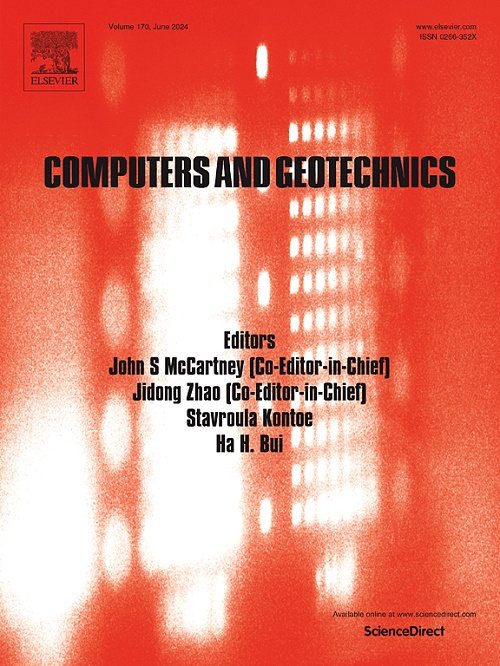Numerical prediction of a pile’s response under lateral monotonic and cyclic loading
IF 5.3
1区 工程技术
Q1 COMPUTER SCIENCE, INTERDISCIPLINARY APPLICATIONS
引用次数: 0
Abstract
This article presents the findings of a comprehensive assessment of the predictive capabilities and limitations of advanced geotechnical numerical tools utilizing two sophisticated constitutive models for sands: the hardening soil model with small strains and hypoplasticity with intergranular strain. The evaluation is based on simulations of laboratory and centrifuge tests under monotonic and cyclic loading conditions. Initially, these models were calibrated and assessed using an experimental database on Fontainebleau sand. This database encompasses a range of laboratory results, including isotropic compression, drained monotonic triaxial, and undrained cyclic triaxial tests with varying initial conditions. The models, in general, provided good representation for monotonic experiments while some discrepancies were observed in undrained cyclic experiments. Subsequently, the calibrated models were employed to replicate a series of centrifuge tests involving a pile embedded in the same sand. The pile was subjected to various episodes of monotonic and cyclic lateral loading. In general, the models accurately replicated the experimental observations from tests conducted under monotonic loading conditions. Some small discrepancies were found in pile tests subjected to cyclic loading, these were however minor when compared to issues in predicting cyclic element tests at undrained conditions.
求助全文
约1分钟内获得全文
求助全文
来源期刊

Computers and Geotechnics
地学-地球科学综合
CiteScore
9.10
自引率
15.10%
发文量
438
审稿时长
45 days
期刊介绍:
The use of computers is firmly established in geotechnical engineering and continues to grow rapidly in both engineering practice and academe. The development of advanced numerical techniques and constitutive modeling, in conjunction with rapid developments in computer hardware, enables problems to be tackled that were unthinkable even a few years ago. Computers and Geotechnics provides an up-to-date reference for engineers and researchers engaged in computer aided analysis and research in geotechnical engineering. The journal is intended for an expeditious dissemination of advanced computer applications across a broad range of geotechnical topics. Contributions on advances in numerical algorithms, computer implementation of new constitutive models and probabilistic methods are especially encouraged.
 求助内容:
求助内容: 应助结果提醒方式:
应助结果提醒方式:


